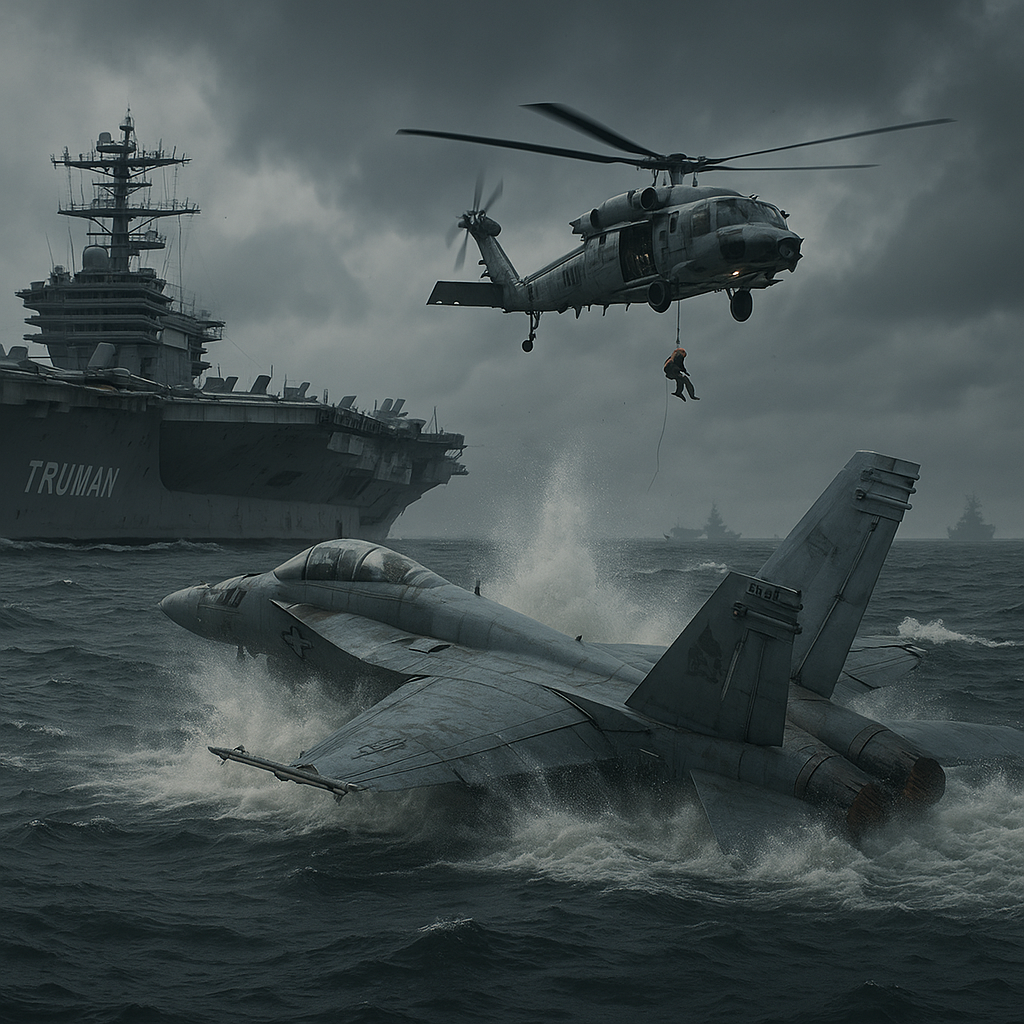Another major incident involving the USS Harry S. Truman aircraft carrier has occurred with the loss of a second U.S. Navy fighter plane in the Red Sea. This latest event comes just over a week after another fighter jet from the same ship was also lost at sea.
The Red Sea Sees Another F/A-18 Super Hornet Drop
This time, the jet involved was an F/A-18 Super Hornet, a twin-engine fighter used for both air-to-air combat and attack missions. The plane was trying to land on the carrier when it fell into the sea, according to sources with knowledge of the event.
While the exact cause of the crash is still under investigation, early information suggests that there may have been a problem with the landing gear system, also known as the “arrestment system,” which is designed to stop the plane quickly as it touches down on the deck.
The jet’s pilot and weapons systems officer had to leave the aircraft when the situation went wrong. Soon afterward, a Navy chopper safely retrieved them both. Fortunately, they are recovering from relatively minor injuries. However, the jet itself sank into the Red Sea and has not been recovered.
This is the second Super Hornet loss for the USS Truman in less than a week. Each of these fighter jets is valued at more than $60 million, making the losses not just dangerous but extremely costly.
UK Enters the Fray: Joint Night Raid with US Hits Houthi Drone Arsenal in Yemen
A Run of Issues for the USS Truman in the Red Sea
The loss of this second jet is not an isolated issue. The USS Harry S. Truman, which is part of the U.S. Navy’s operations in the Red Sea, has faced multiple challenges during its deployment in the region.
Another F/A-18 jet had plummeted into the ocean only a week before. In that incident, early reports suggested that the ship had to make a sudden sharp turn, possibly to dodge incoming fire. This sudden movement may have caused the jet to lose balance and slide off the deck. That aircraft also ended up in the Red Sea, adding to growing concerns about the safety and operations of the ship.
In addition to the collisions, the Iran-backed Houthi militia, which has been attacking ships in the Red Sea, has also threatened the USS Truman. On Tuesday, around the same time as the second jet crash, the Houthis reportedly fired at the Truman. This occurred even though a ceasefire had been announced earlier that day. It is not yet clear whether this attack had any connection to the aircraft crash.
The U.S. Navy and Central Command have not yet provided official comments on the incident, and investigations are still ongoing to find out exactly what went wrong.
Deadly US F-35 Deployment Escalates Conflict with Houthis in the Middle East
Previous Accidents and Safety Concerns
The recent losses are just the latest in a string of incidents involving the Truman in recent months. Another Super Hornet from the same carrier crashed into the Red Sea back in December. The USS Gettysburg, another U.S. Navy ship, unintentionally targeted the plane, resulting in a friendly fire error that caused that disaster. That flight’s two crew members were retrieved after successfully ejecting.
In February, the Truman was involved in another incident far from the Red Sea. The aircraft carrier struck a merchant ship in the Mediterranean Sea close to Egypt. The accident raised more concerns about the ship’s overall performance and safety. Following that collision, changes in command were made aboard the vessel.
Meanwhile, other U.S. Navy ships in the region have also faced threats. In early 2024, one Navy destroyer had to fire its emergency defense system to stop a missile fired by the Houthis that came within a mile of hitting the ship. This highlights how serious and immediate the threats are in the area.
Red Sea Turmoil Intensifies as Houthi Rebels Vow Relentless Retaliation
The Harry S. Truman carrier is a large and powerful ship, designed to carry dozens of fighter jets and support U.S. military operations at sea. But its mission in the Red Sea has been filled with dangerous situations, technical issues, and unexpected threats.
With the loss of two expensive fighter jets in such a short time and a growing number of incidents surrounding its deployment, the Truman’s situation has drawn close attention.
As investigations continue, the focus remains on recovering information and understanding how to prevent such accidents in the future. For now, these incidents underline the dangers that U.S. forces face daily in high-risk zones like the Red Sea.

